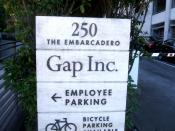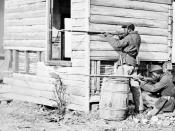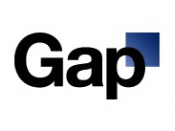I. IntroductionThe case study focus for the GAP, Inc. covers a period from the 1990's to the present and focuses on marketing measures and effects. Following an overview and brief history of the company, the analysis considers the GAP's segment strategy, outlines its system of distribution, and discusses its social and promotion policies. The analysis concludes with an evaluation of the GAP's current position and makes recommendations for future developments.
II. Executive SummaryFounded in 1969, GAP, Inc. is a leading international specialty retailer offering clothing, accessories and personal care products for men, women, children and babies. Today, GAP Inc. is one of the world's largest retailers, with more than 3,100 stores worldwide and 2005 fiscal revenues of $16 billion. The GAP operates five apparel brands: Gap, Banana Republic, Old Navy, Forth & Towne and Piperlime and several expansion stores such as Baby Gap, Maternity Gap and several others, with some online shopping accessibility.
In the early 1990's GAP held a strong market share but a shift from their original mission and an increase in competition lead to a decrease in customer loyalty and loss of investors. GAP had strayed away from it's tried, tested and true image of providing basic, timeless, quality products and added lines of trendier items in attempt to gain a larger market share. In doing so they lost large amounts of their original customers, as their new products did not appeal to their original target market, while they failed to grab a larger share of the projected market. The decrease in customer loyalty ended up leading to a decrease in investor confidence causing losses of millions for the company.
Since 2001, GAP has struggling to win back their original target market while acquiring other stores to focus on the other segments of the markets. In Spring...


